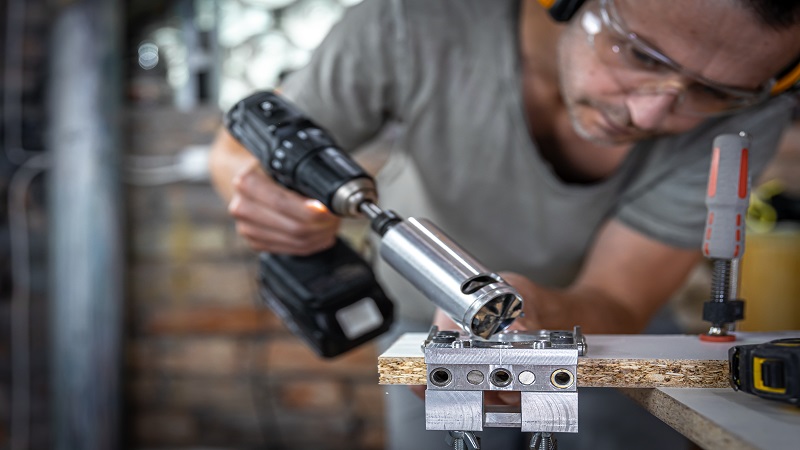In the world of industrial machining and precision engineering, the winkelbohrspindel has become an essential tool for creating angled holes with exceptional accuracy. Translating from German as “angle drilling spindle,” this specialized component is designed to perform drilling operations where a standard vertical or horizontal spindle would be impractical. Whether used in automotive manufacturing, aerospace engineering, or custom metal fabrication, the winkelbohrspindel allows machinists to access tight spaces and maintain precise drilling angles.
What Is a Winkelbohrspindel?
A winkelbohrspindel is a mechanical spindle attachment or dedicated unit that enables drilling at specific angles, often beyond the reach of a standard vertical milling machine. Unlike conventional spindles that operate strictly along the Z-axis, the angle spindle pivots to achieve custom orientations. Its construction typically includes:
-
Angular Head Assembly: Allows rotation to the required drilling angle.
-
Precision Bearings: Ensure minimal vibration and optimal torque transmission.
-
Rigid Housing: Provides stability and protects internal gears from debris.
These features enable operators to drill or mill holes at various angles without repositioning the entire workpiece, which saves time and increases accuracy.
Key Components and Design
The efficiency of a winkelbohrspindel depends on the integration of its core components:
-
Drive Shaft: Transfers rotational force from the machine’s motor to the angled head.
-
Gearbox Mechanism: Changes the axis of rotation, often using bevel gears for smooth torque delivery.
-
Tool Holder: Compatible with different cutting tools, ensuring flexibility in drilling and milling tasks.
Advanced designs may incorporate coolant channels to reduce heat buildup and extend tool life. High-grade alloys and precision-engineered bearings also enhance the durability of these spindles.
Applications Across Industries
The winkelbohrspindel is valued for its versatility across numerous sectors:
-
Automotive Manufacturing: Ideal for drilling angled holes in engine blocks or transmission housings.
-
Aerospace Engineering: Essential for creating complex geometries in aircraft components.
-
Furniture Production: Useful for cabinetry and joinery requiring non-perpendicular holes.
-
Medical Device Fabrication: Helps create intricate surgical tools with precise angular cuts.
By allowing angled machining without repositioning the entire workpiece, the winkelbohrspindel boosts productivity and reduces the risk of dimensional errors.
Advantages of Using a Winkelbohrspindel
-
Enhanced Flexibility: Operators can achieve complex hole orientations quickly.
-
Time Efficiency: Eliminates the need for multiple setups, reducing overall machining time.
-
Improved Accuracy: Maintains consistent drilling angles for precise results.
-
Cost Savings: Reduces scrap rates and minimizes the need for custom jigs or fixtures.
These benefits make the winkelbohrspindel a smart investment for workshops aiming to improve throughput and maintain high quality standards.
Selection Criteria for the Right Winkelbohrspindel
When choosing a winkelbohrspindel, consider the following factors:
-
Spindle Speed and Torque: Match the spindle’s speed range to the material and tool requirements.
-
Angle Range: Ensure the spindle offers the desired degree of adjustment.
-
Compatibility: Verify that the spindle integrates with your machine’s interface and control systems.
-
Cooling Options: For heavy-duty operations, internal coolant channels can prolong tool life.
Comparing specifications from reputable manufacturers and consulting with equipment suppliers will help you select a spindle that meets your production needs.
Maintenance and Care Tips
Proper maintenance extends the life of a winkelbohrspindel and ensures consistent performance:
-
Regular Lubrication: Keep gears and bearings well-oiled to minimize friction.
-
Cleaning After Use: Remove metal shavings and debris to prevent wear.
-
Periodic Inspections: Check for misalignment or unusual vibrations.
-
Timely Replacement of Bearings: Prevent costly downtime by replacing worn parts promptly.
By following a preventive maintenance schedule, operators can avoid unexpected breakdowns and maintain precision over time.
Innovations and Future Trends
As industries adopt automation and smart manufacturing, the winkelbohrspindel is evolving with new technologies:
-
CNC Integration: Modern angle spindles can interface directly with computer numerical control systems for automated adjustments.
-
Lightweight Materials: Use of advanced composites reduces weight while maintaining strength.
-
Sensor Technology: Embedded sensors provide real-time feedback on temperature, torque, and vibration.
These advancements will make future winkelbohrspindel models even more efficient, precise, and user-friendly.
Conclusion
The winkelbohrspindel is more than just an accessory—it is a critical component for industries demanding accuracy and flexibility in angled drilling operations. From automotive to aerospace applications, it enhances productivity, reduces setup times, and ensures precise results. Investing in the right winkelbohrspindel, maintaining it properly, and staying updated on emerging technologies will help manufacturers meet the growing demands of modern machining.
